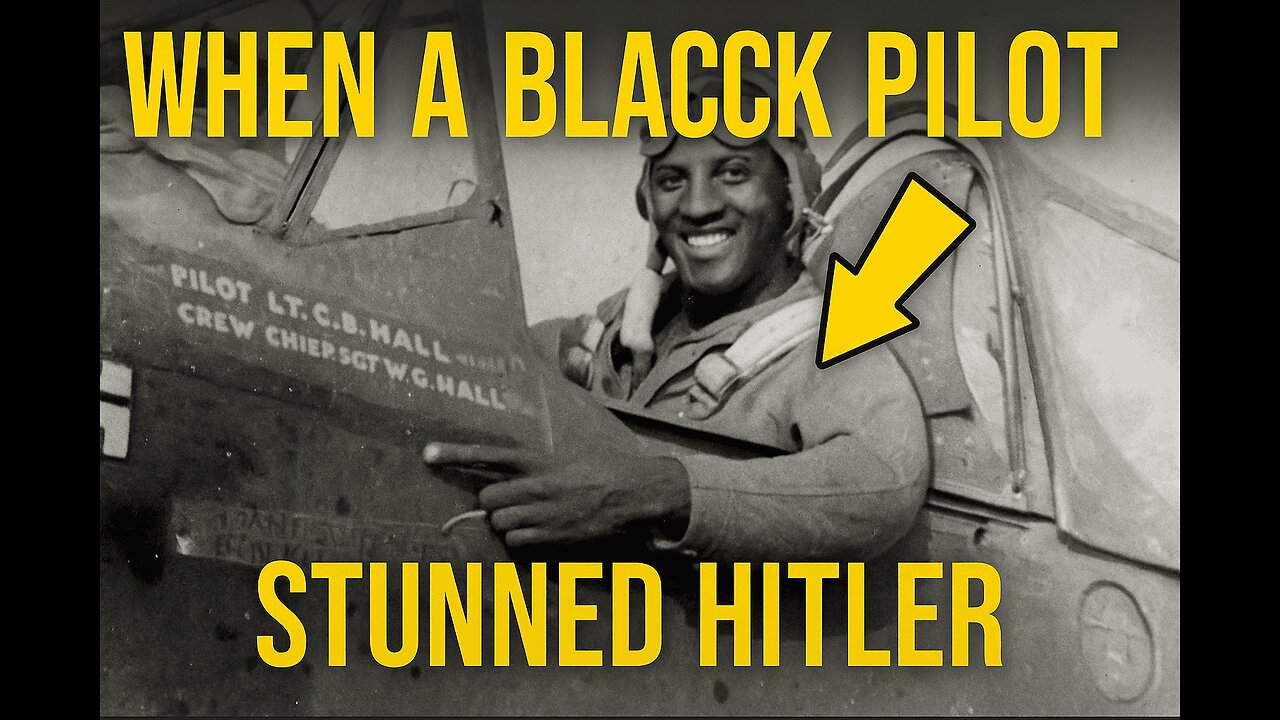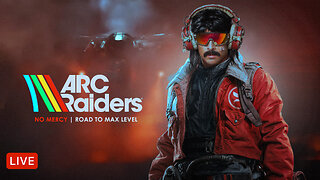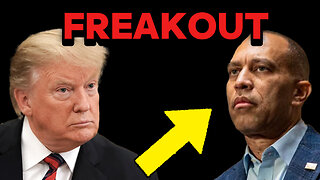Premium Only Content

What H*tler Did when some Black Pilots shamed on his Luftwaffe
April 8th, 1943, 27,000 feet above France, the cold air sliced through the cockpit of a Focke-Wulf 190 as Oberleutnant Ralf Hermsen grinned behind his oxygen mask. Below him, a formation of clumsy-looking American fighters lumbered upward, their oversized propellers chopping the thin air. He radioed his wingman with a chuckle, “They’ve sent us flying milk bottles.” Sixteen P-47C Thunderbolts, each weighing over seven tons, struggled to gain altitude, their engines roaring in protest. To German pilots used to sleek Spitfires and nimble 109s, the Thunderbolt looked like a joke. What Hermsen didn’t know was that he was looking at the weapon that would eventually erase the Luftwaffe from the skies. Within a year, those “milk bottles” would become the most feared fighters in Europe. Each carried eight .50-caliber Browning machine guns, 3,400 rounds of ammunition, and enough firepower to shred an enemy plane in seconds. But on that cold morning, they were just rookies in brand-new machines. Major Donald Blakeslee, leading the squadron, knew the truth — survival in the P-47 meant unlearning everything they knew about dogfighting. The Thunderbolt wasn’t built to dance; it was built to crush. While German designers chased agility, the Americans built a monster that could outclimb, outdive, and outgun anything once pilots learned to use it right. Its creator, Alexander Kartveli, had warned his team, “It’ll be a dinosaur, but a dinosaur with good proportions.” When the prototype first flew in 1941, it shocked everyone. At nearly 10,000 pounds empty, it was 60% heavier than its predecessor, but it soared to altitudes the Luftwaffe couldn’t reach. The secret was its massive turbo-supercharged R-2800 engine, pumping out 2,000 horsepower at heights where other fighters could barely breathe. Yet early on, the plane terrified its own pilots more than the enemy. It was deadly on the runway, unstable in dives, and unforgiving in mistakes. Between September 1942 and January 1943, more than 40 P-47s were destroyed in accidents. But the few who mastered it discovered its terrifying potential. Lieutenant Robert Johnson remembered his first flight vividly: “It was like being strapped to a freight train. You didn’t fly it—you aimed it.” In early combat, German pilots mocked the Thunderbolt. It couldn’t turn with a Messerschmitt, couldn’t climb like a Focke-Wulf, and bled speed in tight maneuvers. Luftwaffe ace Josef “Pips” Priller sneered in his report, calling it a “pregnant cow” and “a fat target pretending to be a fighter.” In the first month, American groups lost 14 P-47s while claiming only three enemy kills.
-
 LIVE
LIVE
BonginoReport
54 minutes agoTrump IS The Comedian in Chief - Nightly Scroll w/ Hayley Caronia (Ep.180)
635 watching -
 LIVE
LIVE
Kim Iversen
1 hour agoMarjorie Taylor Green Calls Trump A Traitor | Epstein's Brother Says They're SCRUBBING Files Of GOP Names
8,694 watching -
 1:36:18
1:36:18
Redacted News
2 hours agoBOMBSHELL! HOUSE VOTES TO RELEASE EPSTEIN FILES, EPSTEIN BROTHER SPEAKS ABOUT COVER-UP | REDACTED
122K70 -
 LIVE
LIVE
Dr Disrespect
7 hours ago🔴LIVE - DR DISRESPECT - ARC RAIDERS - NO MERCY TO MAX LEVEL
1,750 watching -
 LIVE
LIVE
StoneMountain64
4 hours agoBlack Ops 7 Dead Ops ARCADE Gameplay #Cod_Partner
74 watching -
 34:49
34:49
Stephen Gardner
2 hours ago🔥Trump DROPS Secret Plan – Democrats Left SPEECHLESS!
9.58K27 -
 LIVE
LIVE
The Rabble Wrangler
14 hours agoNew Eastwood Map | The Best in the West Dominates the Battlefield
44 watching -
 1:10:42
1:10:42
vivafrei
3 hours agoThomas Crooks Exposé is a BOMBSHELL! Epstein Drama Continues! Alexis Wilkins Streisand Effect & More
113K60 -
 1:41:04
1:41:04
The Quartering
4 hours agoEpstein Files Takes Its First Scalp, MTG Unleashes, Kash Patel Blasted, Internet Outage & More
117K85 -
 24:53
24:53
Jasmin Laine
2 hours ago“NO ONE BELIEVES YOU”—Carney Gets HUMILIATED in BRUTAL Showdown
4.36K10